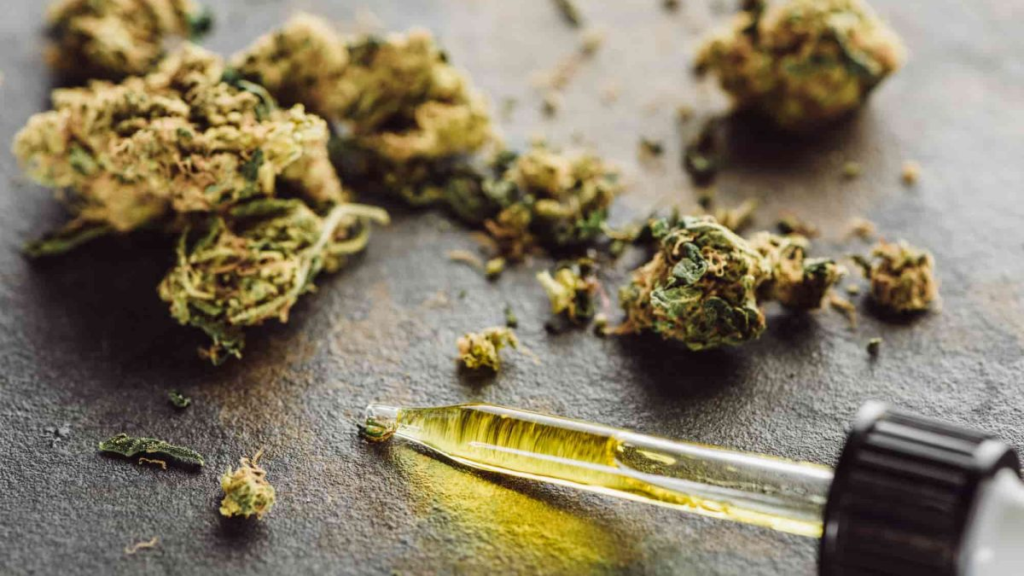Introduction: The Rise of Vaping
Vaping has rapidly gained popularity as a method of consuming various substances, from nicotine and marijuana to more dangerous drugs. Promoted as a “safer” alternative to smoking, vaping has become especially popular among younger demographics. However, it’s crucial to understand the risks and effects associated with vaping, especially when it comes to marijuana and other drugs.

Vaping Marijuana: The Basics
Vaping marijuana involves heating cannabis products to a temperature where active ingredients like THC and CBD are released as vapor, without burning the plant material. This vapor is then inhaled, providing a quicker and often more intense effect compared to traditional smoking.
Forms of Marijuana for Vaping:
- Dry Herb Vaporizers: These devices are designed to vaporize ground cannabis flowers.
- Oil Cartridges: Pre-filled with THC or CBD oil, these cartridges are compatible with specific vape pens.
- Wax/Dabs: Concentrated forms of cannabis, like wax or shatter, are vaporized at high temperatures.
Advantages of Vaping Marijuana:
- Reduced Harm: Vaping eliminates many harmful byproducts of combustion, such as tar and carcinogens, making it potentially less harmful to the lungs than smoking.
- Discretion: Vapor tends to dissipate quickly and produce less odor than smoke, making it a more discreet option.
- Efficient Delivery: Vaping can provide a more efficient delivery of cannabinoids, often requiring less product to achieve the desired effect.
Risks and Considerations:
- Health Risks: While vaping is less harmful than smoking, it is not without risks. Some vape cartridges, especially those from unregulated sources, may contain harmful additives like vitamin E acetate, which has been linked to serious lung injuries.
- Potency: Vaping concentrates or oils can result in higher THC levels being consumed in a short time, increasing the risk of adverse effects like anxiety, paranoia, or dizziness.
- Addiction Potential: Regular vaping of THC can lead to tolerance, dependence, and withdrawal symptoms.
Vaping Other Drugs: An Emerging Danger
Beyond marijuana, vaping has also been used as a method to consume other substances, including nicotine, synthetic drugs, and even harder drugs like methamphetamine or heroin. This practice is highly dangerous and carries significant health risks.
Nicotine Vaping:
- Widespread Use: Nicotine vaping, especially through e-cigarettes, has become common, particularly among teenagers and young adults.
- Health Concerns: Nicotine is highly addictive, and vaping can lead to dependence. Moreover, the long-term health effects of inhaling nicotine-laden vapor are still being studied, with concerns about lung damage and cardiovascular health.
- Gateway Effect: There is concern that vaping nicotine could serve as a gateway to other forms of drug use, including marijuana and more dangerous substances.
Vaping Synthetic Drugs:
- Unknown Ingredients: Synthetic cannabinoids (often marketed as “Spice” or “K2”) or synthetic cathinones (“bath salts”) can be vaped, but these substances are unpredictable and often more potent than natural marijuana. They carry a high risk of overdose, severe psychological effects, and even death.
- Increased Potency: Vaping synthetic drugs can intensify their effects, leading to increased risks of toxic reactions, hallucinations, and dangerous behavior.
Vaping Hard Drugs:
- Extreme Risks: Some individuals have turned to vaping methamphetamine, heroin, or cocaine. This method delivers the drug directly to the bloodstream through the lungs, resulting in a faster, more intense high. However, it also significantly increases the risk of addiction, overdose, and severe lung damage.
- Contaminants: Illicit drugs often contain impurities or cutting agents that can cause additional harm when vaporized and inhaled.

Legal and Social Implications
Legal Status:
- Cannabis: The legality of vaping marijuana varies by region, with some areas allowing it for medicinal or recreational use, while others prohibit it entirely. Even in places where marijuana is legal, there are often restrictions on where and how it can be consumed.
- Other Drugs: Vaping illicit drugs is illegal and carries severe legal penalties, including fines and imprisonment.
Social Concerns:
- Youth Appeal: The sleek, high-tech appearance of vaping devices, combined with the perception that vaping is less harmful, has made it attractive to younger individuals. This has led to concerns about increased drug use among adolescents and young adults.
- Public Health: The rise of vaping, particularly among younger populations, has prompted public health campaigns aimed at educating about the risks and discouraging use.
Conclusion: Weighing the Risks
While vaping may offer a less harmful alternative to smoking for marijuana users, it is not without its risks. The potential for high potency, addiction, and the dangers of unregulated products should not be underestimated. Moreover, the practice of vaping other drugs introduces a host of severe health risks that far outweigh any perceived benefits.
For anyone considering vaping, especially when it comes to substances beyond marijuana, it’s crucial to be informed and to weigh the potential risks against the benefits. If you or someone you know is struggling with substance use, it’s important to seek professional help and explore safer, healthier alternatives.
0 Comments